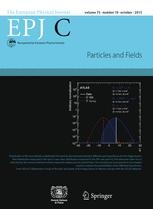Jul 13 2016
Neutrinos are elementary particles known for displaying weak interactions. As a result, neutrinos passing each other in the same place hardly notice one another. Yet, neutrinos inside a supernova collectively behave differently because of their extremely high density. A new study reveals that neutrinos produced in the core of a supernova are highly localised compared to neutrinos from all other known sources. This result stems from a fresh estimate for an entity characterising these neutrinos, known as wave packets, which provide information on both their position and their momentum. These findings have just been published in EPJ C by Jörn Kersten from the University of Bergen, Norway, and his colleague Alexei Yu. Smirnov from the Max Planck Institute for Nuclear Physics in Heidelberg, Germany. The study suggests that the wave packet size is irrelevant in simpler cases. This means that the standard theory for explaining neutrino behaviour, which does not rely on wavepackets, now enjoys a more sound theoretical foundation.

One of the laws governing particles at the quantum scale - called the uncertainty principle - tells us that we cannot simultaneously know a particle's position and momentum (which is the product of their mass times their velocity) with arbitrary precision. Particles like neutrinos are therefore described by a mathematical entity, called wave packets, the size of which determines the uncertainty in the neutrino’s position and momentum.
The authors find that neutrino wave packets in supernovae are unusually small in size. This implies that each individual neutrino displays decoherence. Kersten and Smirnov, however, show that this decoherence effect does not have any impact on the experimental measurement of the oscillation probability for each neutrino flavour; they only demonstrate this result in cases that are similar to, albeit simpler, than what happens in a supernova, where collective effects occur.
In this study, the authors thus provide a theoretical motivation to the use of the standard description of supernova neutrinos, which does not rely on wave packets. Indeed, their findings suggest that collective effects are also unaffected by the neutrino wave packet size, a premise that has yet to be proven.